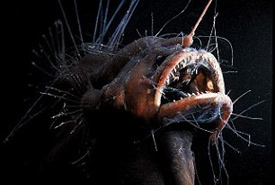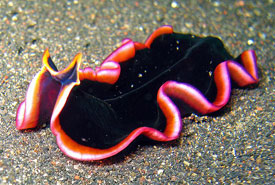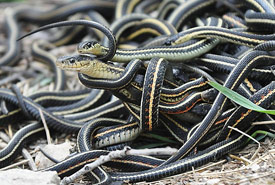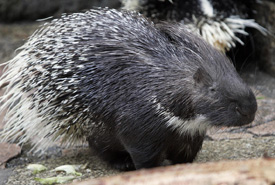Ten of nature's strangest mating strategies

Angler fish (Photo by David Shale)
During my final year of university, I took a course called Evolution and Reproduction, which explored various animal mating strategies. It was one of my most fascinating classes; the material was mind blowing, the professor was a hoot and the textbook, Dr. Tatiana’s Sex Advice to All Creation, was both hilarious and informative. With Valentine’s Day on the horizon, I thought it would be the perfect time to share 10 of the weirdest mating strategies in the animal kingdom.
1. When two become one
When certain angler fish sub-species mate, the male bites into the female and essentially becomes a parasite. The male fuses with the female’s body, to the point where all that remains of him are his testes, which are ready to fertilize the female’s eggs when she ovulates. This mating strategy has evolved for deep sea life, where it’s rare to come across a member of the opposite sex.
2. Long distance? No problem!
Male argonaut octopuses have a detachable phallus, which is a small sperm ball inside a hectocotylus (modified octopus arm). When a female argonaut octopus swims by, the male’s phallus detaches from his body, floats to the female and mates with her. The female can store multiple phalluses in her spacious mantle cavity (the cavity in which the gills are found). Shortly after releasing its phallus, the male dies.

Praying mantises mating (Photo by Oliver Koemmerling)
3. Quit playing games with my head
When praying mantises mate, the male experiences a tragic ending: the female rips off his head and eats him. However, while the female is preoccupied with her afternoon snack, the male’s genitals continue to work their magic. As brutal as this strategy may seem, it enables the male to have greater reproductive success because while the female is eating his corpse, she isn’t mating with other males, so his sperm are essentially guaranteed to fertilize her eggs.
4. Sleep tight, don’t let the bed bugs…stab?
Termed “traumatic insemination,” male bed bugs mate with females by using their barbed phalluses to stab into the females’ bodies. The sperm then travels through the female’s bloodstream to its ovaries.

Marine flatworm (Photo by Jens Petersen/Wikimedia Commons)
5. En garde!
Marine flatworms, which are hermaphroditic (have both male and female reproductive organs), engage in “penis fencing” during mating. In this ritual, the worms use their phalluses to try and pierce through each other’s skin to inseminate one another. The losing partner has the burden of carrying the offspring, which requires more energy.
6. Brainwashing at its finest
Like the marine flatworm, the sea slug is a hermaphrodite. When it mates, it stabs its partner directly in the forehead with its razor-sharp penis, ejaculating into its cerebral ganglia. This manipulates the partner into assuming the female role in the pair.
7. The good life
Green spoon worm larvae are born without a sex. Some larvae will attach themselves to a female’s body and become male. The female then inhales the male, which spends the rest of its life inside the female’s body, continually releasing sperm.

Red-sided garter snakes mating (Photo by Oregon State University/Wikimedia Commons)
8. Plug it in, plug it in
After a male Darwin’s bark spider fertilizes a female, he plugs up the female’s genitals with a mating plug. Using silk, the female traps the male so that he’s stuck to her genitals, saving him for when she’s hungry.
9. Talk about suffocating
As soon as they emerge from hibernation, red-sided garter snakes come together in large mating groups consisting of up to 100 males trying to mate with one female. Unfortunately for the female, she risks suffocating to death. While the female uses escape strategies such as defecating to deter the males, or doing a “body roll,” males have scales on their bellies that they can use to keep the poor female in place.

Porcupine (Photo by Uwe Meinhold/Wikimedia Commons)
10. Showering her with love
To get a female porcupine’s attention, the male will urinate on the female from as far as two metres away. If the female finds the male’s pheromones irresistible, she will then mate with him. Both sexes relax their spines while mating, to prevent themselves from wounding each other. Porcupine mating is a rare occurrence, as females are only sexually receptive for eight to 12 hours a year.


